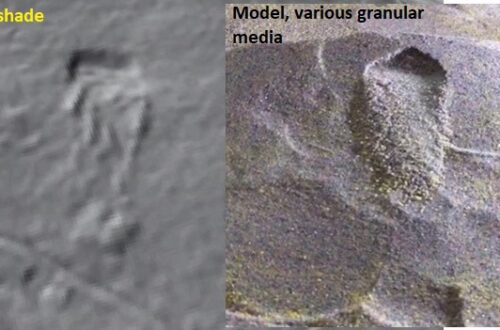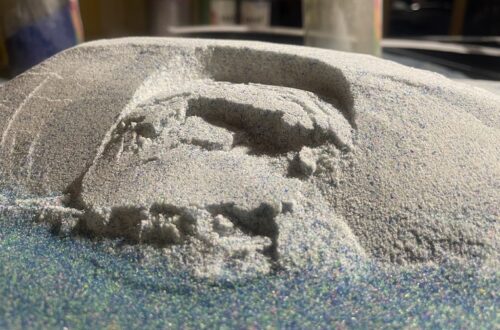
Normal fault, reverse fault, or both?
Philip S. Prince
This model serves as a follow-up to a an earlier post about small reverse faults that form in a model subjected only to extensional movement. I wanted to try to produce similar faults in the sediment package added to the growing basin in an extensional model; the original model formed the interesting faults in the pre-extension layers. The new model, whose color scheme is admittedly quite shocking (think Pepto-Bismol bottle), is shown below. The interesting fault is at the center of the image. The fault is traced in black in the lower image, with arrows indicating movement sense.
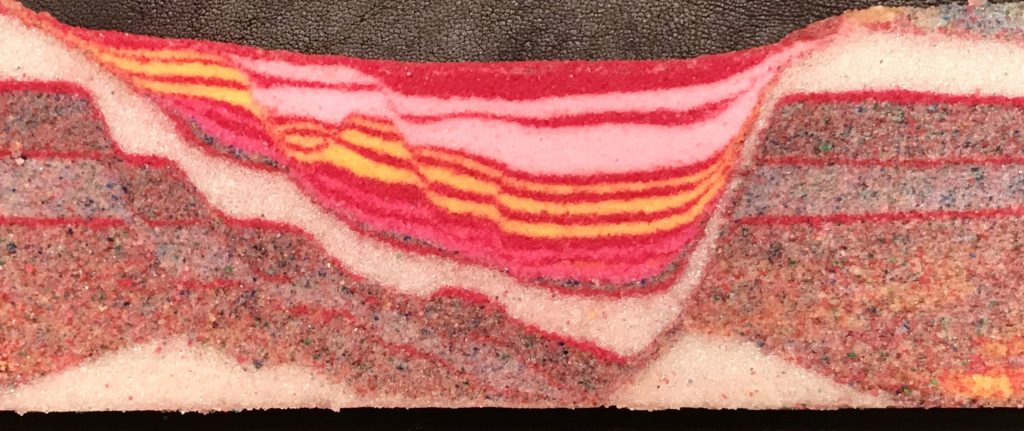
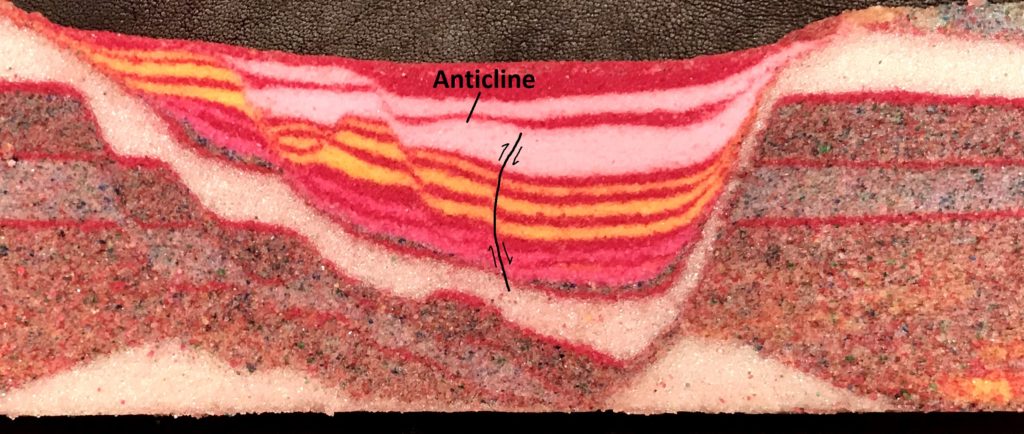
In this case, the fault in question appears to simultaneously accommodate normal- and reverse-sense motion. Layer offsets are normal-sense, like the other faults in the model, in the deeper portions of the fault. Offsets are slightly reverse-sense in the upper parts of the fault, although the dip of the fault is extremely steep and offset is minimal.
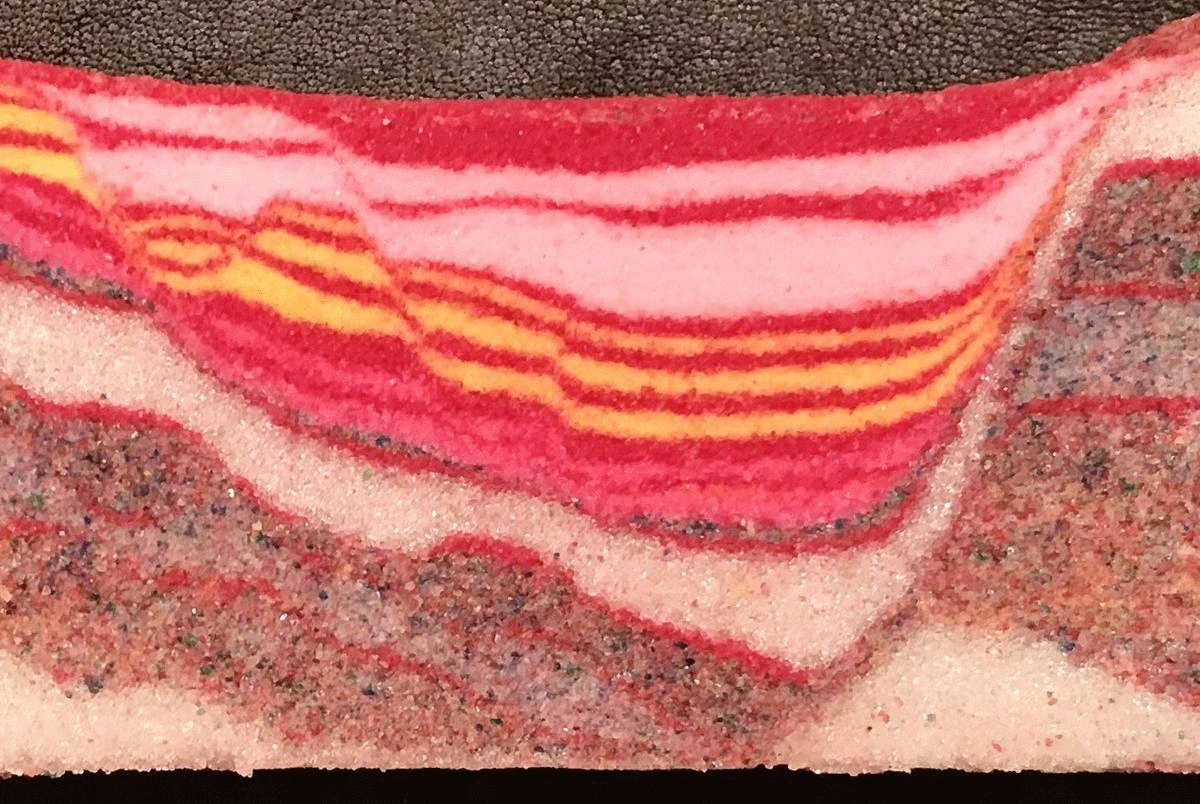
This model was not made in a clear sidewall box (I don’t think the fault in question would even form in one), and the surface of the model during deformation does not provide much insight into how the fault moved and when. Some indication of the reverse-sense movement was apparent on the model surface, but the bright colors of the layering prevented it from showing up in photography. I think a very generalized explanation of the unusual fault is that the large block of layering which it cuts is adjusting to being “packed down” into the narrowing basin. This adjustment is a product of the differing strengths of the materials used and their ordering in the stratigraphy, which control the dip of the main normal faults in the model.
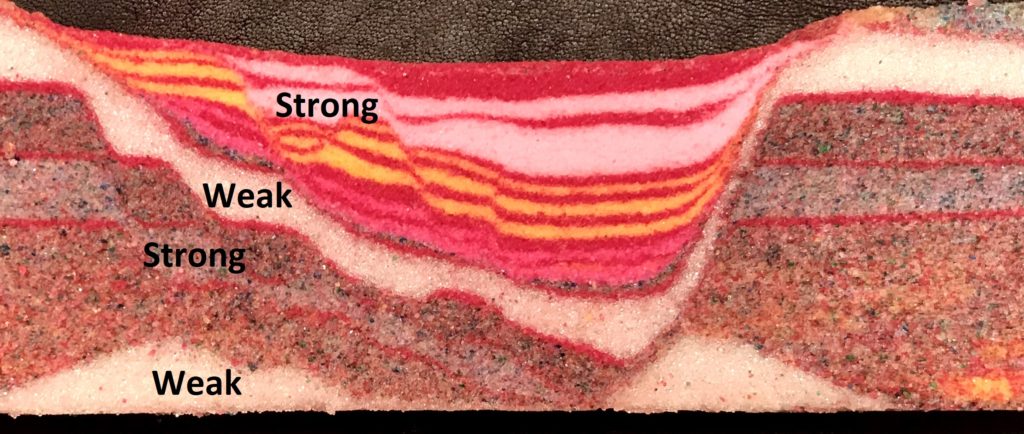
The pre-extension weak layer immediately above the gray “basement” is key to developing the unusual fault geometry. Normal faults cutting upward through the basement flatten as they pass through the weak layer, creating an unusually wide block of material that subsides with continued extension (see the fault-propagation fold animation in the earlier post). As the wide block of material is forced to adjust to the downward-narrowing basement walls, it folds into a syncline and locally creates mild compression due to the thickness of the block. The “normal and reverse” fault thus behaves almost like a hinge, which accommodates the flexure of the subsiding block to fit the basin margins.
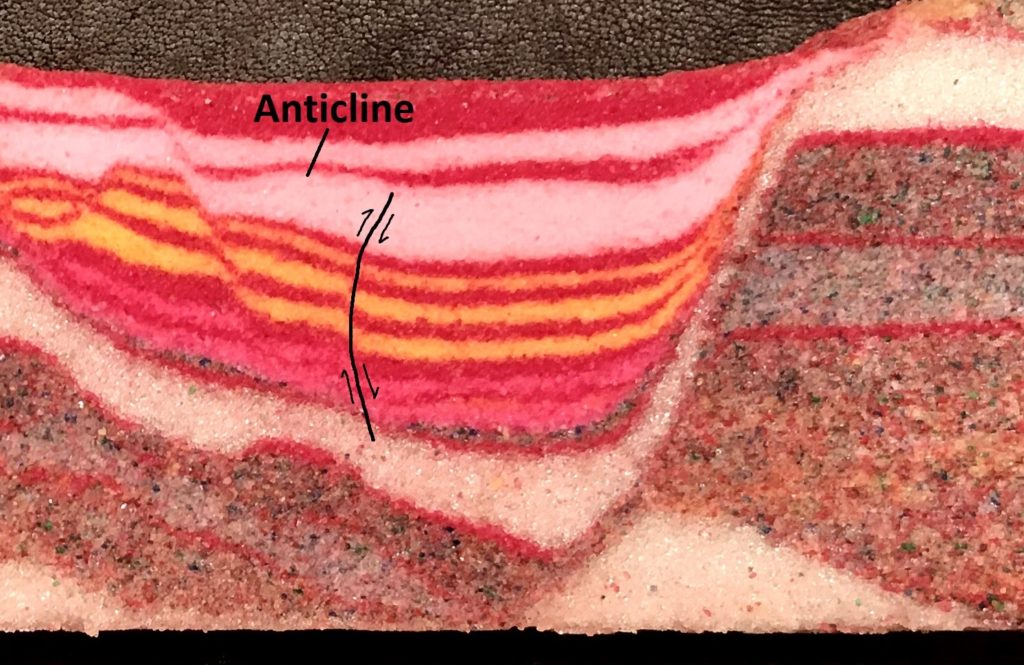
The original post mentions descriptions of real-world examples of unusual faults like the one discussed here, so it is indeed a feature observed in nature. From an interpretation standpoint, I think I might find the reverse-sense movement and adjacent anticline very confusing. These features might be thought consistent with the onset of compression and inversion, but they can develop entirely through extension if the different rock strengths allow normal fault dips to vary with depth.

